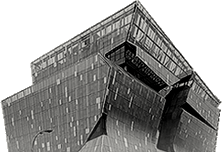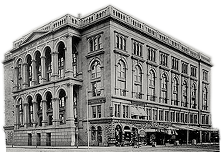First Day of Drawing Class
POSTED ON: March 29, 2015

As a high school student in Queens in the late nineties, I was very lucky to have an art teacher who helped me to put a portfolio together and who pointed the way to The Cooper Union pre-college program. At the time, I didn’t know that it was such a famous institution, or that it was a truly special place to learn about art. My family and I had just come from Cuba three years before. I was just getting a full grasp of the language and my life in New York was limited to the commute from Jackson Heights to Long Island City. To my great surprise, I was accepted to the spring program--but there were more and deeper surprises to come, primarily about art making itself.
On the first day of our drawing course, our teacher introduced the class by telling us not only that he could not teach us how to draw, but that no one else could, either. That no one could teach another person to draw--to see--this was a revelation to me. It meant that I was in charge of my own work. But in spite of his bold statement, he in fact taught us a great deal: his remarks introduced me to abstract thinking, which for me, was like finding the other half of the world.
Before that moment, I had only silent glimpses of the concepts being discussed in class. I was excited to have found the place where I could explore ideas about abstract thinking, and engage others in what used to be for me a private conversation with the paper and pencil. I found a community that shared my passion, where I could expand that private conversation and make it public. I was on my way to learning how to think objectively, and how to reach for universal ideas.
Later, as a freshman at Cooper Union, I read a very short essay titled “Search for the Real,” written in 1941 by the abstract painter Hans Hoffman. The essay made me understand that this same conversation has been happening all along. Some of the ideas explored by Hoffman--from formal relationships of color and line, to the initiations of vision--had been a part of the teacher’s concerns throughout that class. Both this essay and that teacher have become a great part of my formation as a painter and drawing teacher.
Pablo Diaz is the Assistant Director of the Summer Art Intensive.




